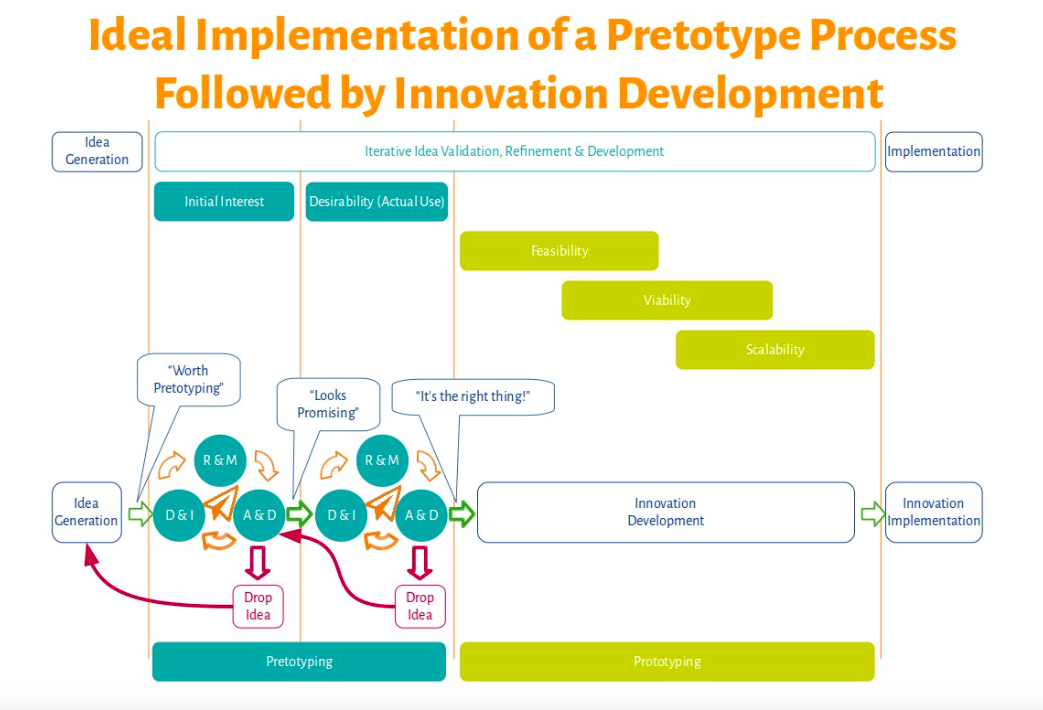Pretotyping is an effective iterative process that helps companies validate assumptions about consumers’ expected behaviors. It’s different from prototyping in that it focuses on creating a solution that solves consumers’ needs, whereas prototyping addresses business concerns like viability and scale. In other words, think of it as creating the “Minimum Desirable Product” as opposed to the “Minimum Viable Product”.

Leonardo Zangrando, founder of the Pretotype Company, has broken down Pretotype iteration into three key activities, which may require several cycles of iteration before moving on to the next step.
- Design and Implementation of the Pretotype (D&I). The first iteration starts with an innovation idea deemed to be worth pretotyping, which is decided jointly by the innovation proponents and the innovation sponsors. The team agrees on metrics and thresholds for the test, and only then do inventors actually design and implement the pretotype.
- Run and Measure the Pretotype (R&M). The most straight-forward step: the pretotype is run and measures are collected.
- Analyze Results and Decide Next Steps (A&D). In the Analyze and Decide step, the results of the experiment are discussed by investors and inventors and a decision is made. For the process to go smoothly, both investors and inventors must agree to determine the success or failure of an experiment based on pre-agreed metrics or thresholds. There are four possible outcomes to the iterative process:
- The innovative idea or assumption passed the test. Congratulations! The same cycle should then be repeated to validate actual use and prove Desirability. At that point, it’s safe to move into prototyping.
- The result is unclear. This means the team will have to conduct further experimentation to validate or disprove the pretotype, and a new experiment should be designed and run.
- The specific assumption failed the test. The Innovation Idea should be revised and tested for a different assumption.
- The innovation idea should be dropped completely. You can’t win them all—it’s time to go back to the Idea Generation phase.








The Evolutionary Edge
Every Link Ever from Our Newsletter
Why Self-Organizing is So Hard
Welcome to the Era of the Empowered Employee
The Power of “What If?” and “Why Not?”
An Adaptive Approach to the Strategic Planning Process
Why Culture/Market Fit Is More Important than Product/Market Fit
Group Decision Making Model: How to Make Better Decisions as a Team